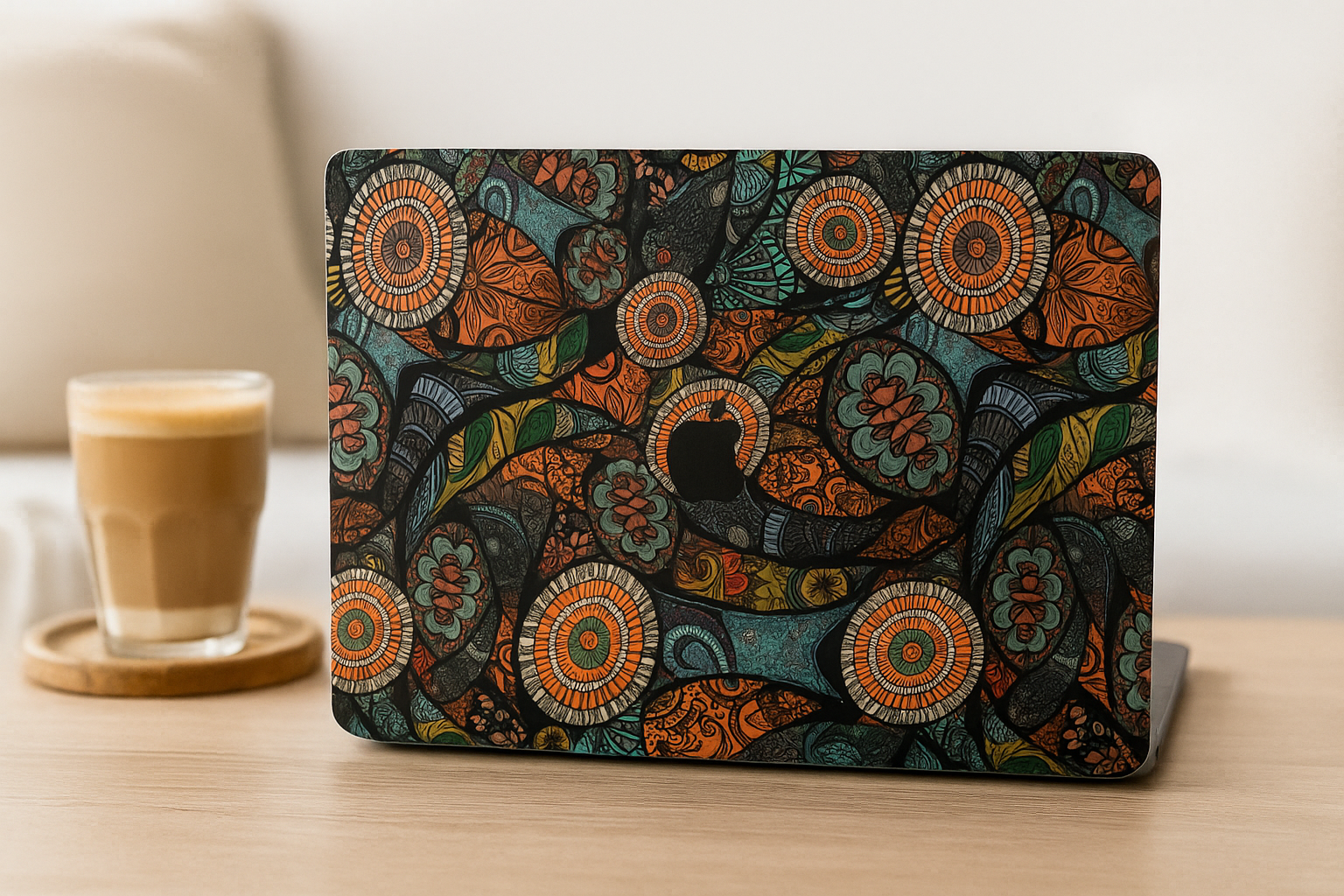Laptop skins have surged in popularity, offering a sleek and personalized way to protect devices while expressing individuality. However, some users wonder—can a laptop skin actually damage your laptop?
Concerns range from surface scratches to heat issues and even warranty risks. This article explores the pros and cons of laptop skins, clears up common misconceptions, and shares tips for using them safely. By the end, you’ll know whether a laptop skin is the right choice for your device.
What Are Laptop Skins?
Laptop skins are thin, adhesive covers designed to attach to the exterior of your device. Most are made from premium vinyl, though some versions include silicone or hard plastic layers.
Key Benefits of Laptop Skins:
- Customization: Skins come in various colors, textures, and designs.
- Protection: They guard against scratches, smudges, and minor abrasions.
- Personalization: Skins allow you to showcase your style while keeping your laptop safe.
Despite these benefits, some users hesitate to apply a skin due to concerns about adhesives and potential damage. Let’s dive deeper.
Worried about messing up the installation? Don’t be—our How to Apply Laptop Skins: A Step-by-Step Guide walks you through the process to get a flawless, bubble-free finish every time.
Do Laptop Skins Damage Laptop Surfaces?
Potential Concerns:
-
Adhesive Residue:
Some fear that removing a laptop skin might leave sticky residue, especially on metallic or matte finishes. -
Peeling or Warping Paint:
Laptops with painted or coated surfaces (like aluminum finishes) could face risks if the adhesive interacts poorly with the surface over time. -
Difficulty in Removal:
If a skin is left on for years or if a low-quality product is used, it might be tough to remove, increasing the risk of scratches.
Reality Check:
When you choose high-quality skins and apply them correctly, the risk of surface damage is minimal.
Most trusted brands use residue-free adhesives that are strong but still safe for removal. The real problem usually arises with cheap or generic skins that use aggressive glue, so product selection matters.
Heat Dissipation and Ventilation Myths
Another frequent question is:
“Will a laptop skin affect heat dissipation?”
Fact vs. Fiction:
- Modern laptops vent heat through specific areas, such as exhaust vents on the sides or back—not from the top or palm rest where skins are applied.
- Applying a skin to the lid, bottom, or palm rest won’t block airflow, as long as you avoid covering the actual vents.
Tip: Never place a skin over fan grills or vent openings.
Accidents happen—but scratches don’t have to stay. Check out our How to Remove Scratches from Your Laptop: A Step-by-Step Guide to restore your laptop’s look and prevent future damage.
Will a Laptop Skin Void Your Warranty?
Warranty concerns often pop up when discussing skins.
The Fine Print:
- Most warranties cover manufacturing defects, not cosmetic alterations.
- Applying a laptop skin won’t void your warranty unless it directly causes a problem (like damaging the surface with low-quality adhesive).
- To be safe, check your laptop brand’s warranty guidelines if you’re unsure.
Pros and Cons of Laptop Skins
Here’s a quick summary of the advantages and drawbacks:
Pros:
-
Customization:
Personalize your laptop with unique colors, textures, and designs. -
Protection:
Safeguards your laptop from scratches, scuffs, and everyday wear. -
Easy Application & Removal:
Premium skins are designed to be easy to apply and leave no residue when removed. -
Improved Grip:
Some skins add texture, reducing slipperiness.
Cons:
-
Adhesive Risks (with Cheap Skins):
Low-quality products might leave sticky residue or damage the surface. -
Removal Hassle:
Skins left on for too long or applied improperly may become difficult to remove. -
Limited Reusability:
Skins are usually not reusable once removed. -
No Drop Protection:
Unlike hard cases, skins won’t protect against drops or impacts—they’re for cosmetic protection only.
Wondering if a laptop skin is worth it? Our Is Laptop Skin Good for Laptop? A Detailed Guide explains how skins protect your device while adding style and personality.
Tips for Choosing and Applying a Laptop Skin
To enjoy the benefits of a laptop skin without any headaches, follow these simple steps:
1. Choose a Reputable Brand
Stick to trusted brands like dbrand, Slickwraps, or Skinit that use premium adhesive materials.
2. Check Reviews
Look for customer testimonials confirming the product doesn’t damage surfaces.
3. Select the Right Fit
Ensure the skin is made for your specific laptop model to avoid covering ports or vents.
4. Prepare the Surface
Clean your laptop with a microfiber cloth and isopropyl alcohol to remove dust and oils before application.
5. Follow Instructions
Use the manufacturer’s guidelines for proper application and removal.
6. Maintain the Skin
Wipe the skin down regularly to keep it looking fresh and prevent dust buildup.
Final Thoughts: Are Full Body Laptop Skins Worth It?
Laptop skins are a great option if you want customization and light protection without the bulk of a case.
When you choose quality skins and apply them properly, they won’t damage your laptop. However, going for cheap, low-quality products can lead to adhesive issues or surface marks.
👉 Still deciding between a laptop skin and full body protection? Check out our in-depth comparison.
The Bottom Line:
If you prioritize style and scratch protection, a laptop skin is a smart investment.
Just remember to:
- Do your research
- Pick a reputable brand
- Follow best practices
